

Six and a half years after the total solar eclipse of 2017, another solar eclipse was poised to make its way across North America in the spring of 2024. I had previously driven hundreds of miles in both directions, from the Washington DC area down to Greenville South Carolia and back again, in order to see the 2017 solar eclipse over the course of one madcap traveling day. That report can be read here on the website for anyone who hasn't seen it previously. We knew that this second eclipse would be arriving in 2024 and made plans to travel to see the celestial fireworks once again. During those intervening six years, I married my wife Liz and we had a son named William together, who would be coming along with us on this trip at the age of 18 months. We'd even be bringing our dog Sidney with us as well although he would be staying inside during the actual eclipse. Thus this would be a different experience from doing a solo drive over the course of one insane day, proceeding at a more reasonable and leisurely pace to accomodate having a toddler along for the journey.

The 2024 eclipse would be passing over a broad stretch of the continental United States, starting in Texas and proceeding northeast above a number of major cities in the Midwest. It made the most sense for us to travel somewhere in the Great Lakes region as this area was close enough to reach via driving as opposed to flying. As it turned out, one of Liz's closest friends from college was living in Syracuse, New York while working as a doctor at one of the local hospitals. We were initially going to call her to ask for hotel recommendations before realizing that we could simply stay at her house, since Liz's friend fortunately didn't mind having a baby and a dog stay for a few days. We left on a Friday and drove north for about six hours, passing through Harrisburg, Scranton, and Binghamton before arriving in Syracuse itself. This gave us a little time to do some sightseeing in the Syracuse area over the weekend before seeing the eclipse itself which took place on a Monday afternoon local time. I had been to Syracuse briefly one time previously but this was the first time that I was able to explore the small city in any detail.

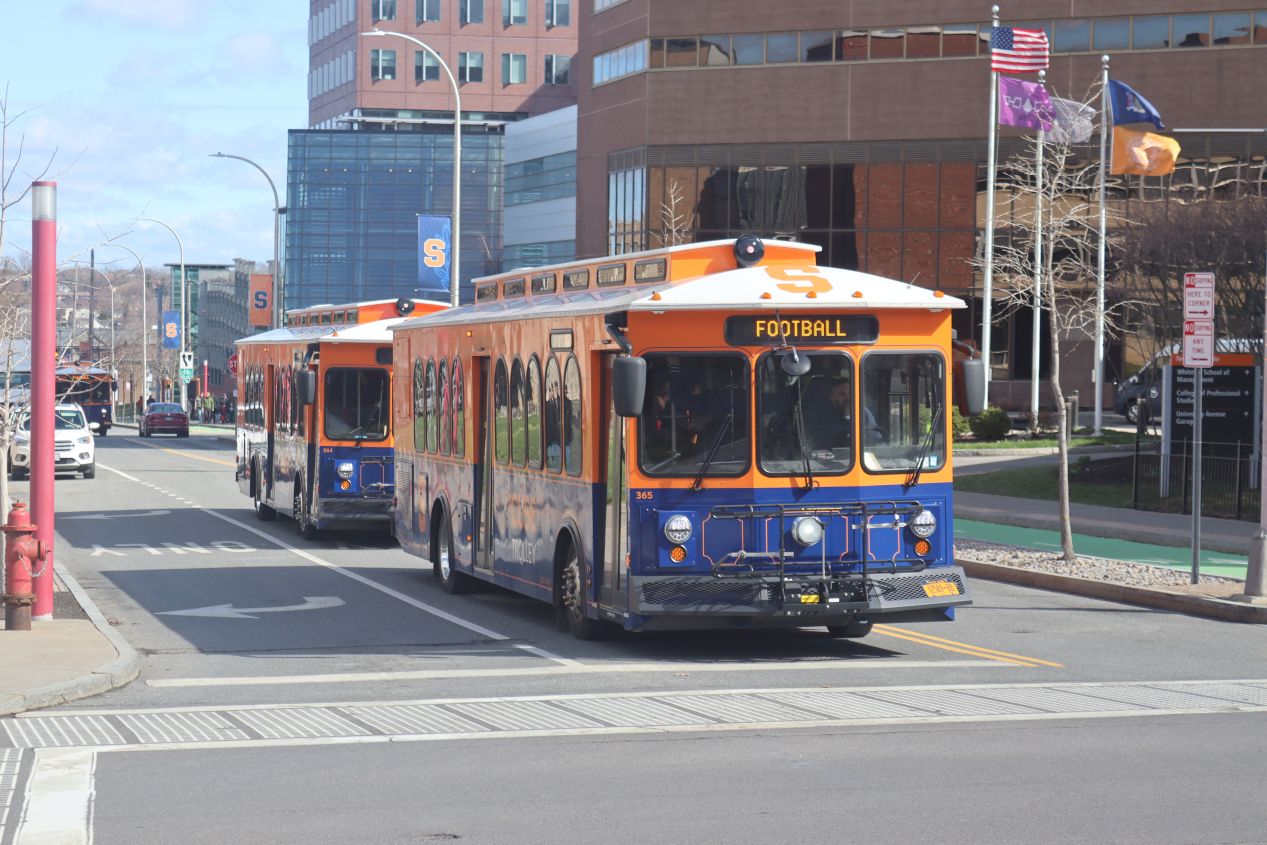


By far the most famous attraction in Syracuse is the university that bears the same name. Founded in 1870, Syracuse University has an excellent academic reputation along with an equally stratospheric pricetag that non-Americans would likely find shocking. Syracuse is only moderately large by the standards of the powerhouse universities, nothing like the Big Ten schools that I visited on my roadtrip across the country a number of years earlier, with an enrollment of roughly 22,000 students at the time of writing. I found the campus to be smaller than I had been expecting and quite compact with everything bunched closely together, perhaps not surprising for a university located in the downtown of a city. We were arriving from the northern side of campus by University Avenue, looking towards the Hall of Languages and Crouse College off in the distance.




We found ourselves right next to the student center and took a quick look around inside. My wife Liz was excited to see a sign advertising a future eSports gaming hub since she had done extensive research in that field. I was more interested in the campus bookstore display commemorating Carmelo Anthony who famously played at Syracuse for one year in 2003 and led the team to a national title. Carmelo grew up in Baltimore and is the same age as my brother; they played against one another a couple of times, and yes, the future NBA star was vastly better than everyone else on the court even when he was 10 years old. The rest of the student center had the usual fast food and casual dining establishments common to these places, although everything was relatively quiet since we were visiting on a Saturday morning. (Otto's Juice Box was actually located over at the recreation center but the picture fit better here.)

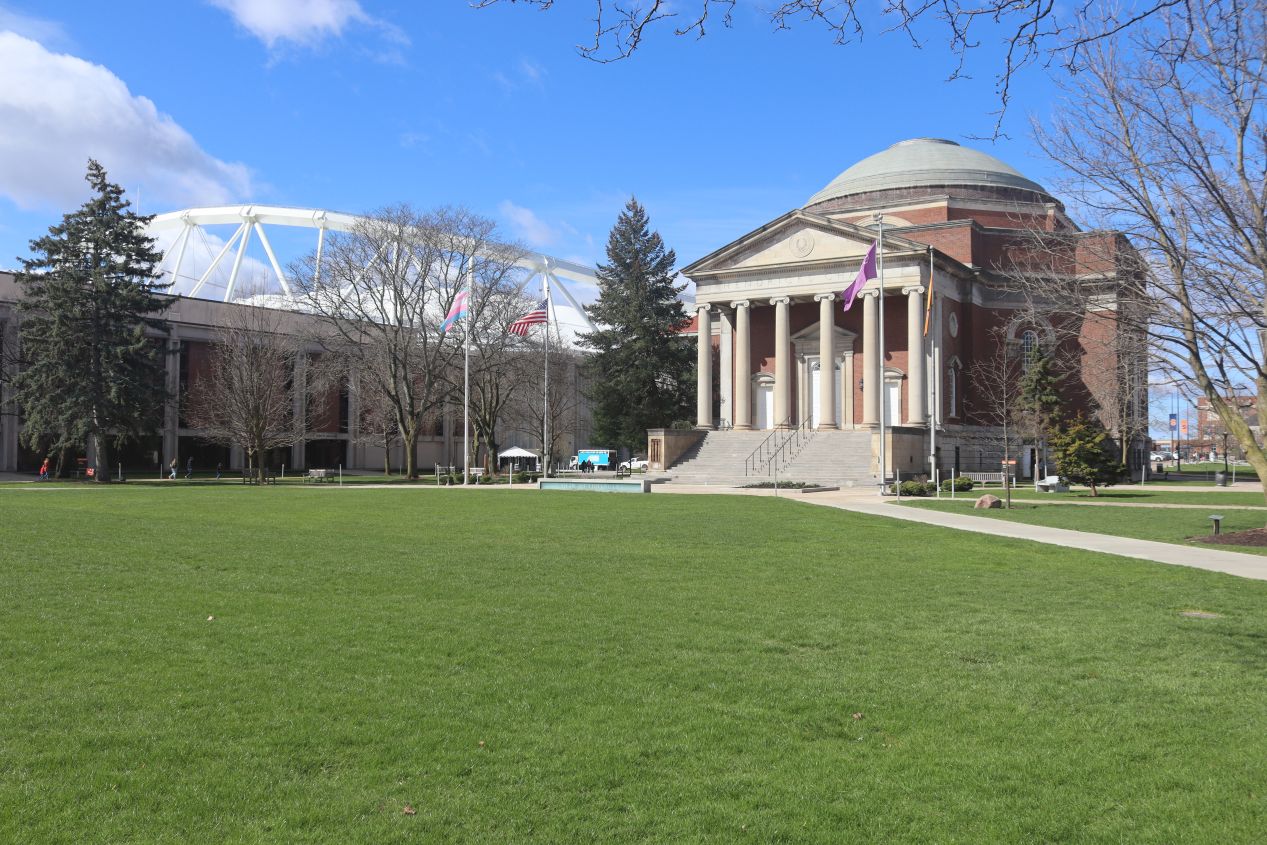


These pictures were taken around the main campus quad at Syracuse (which has its own official name: the Kenneth Shaw Quadrangle). This open green space was again quite small and reflected the urban nature of the university. The building with the Greek columns was a church named Hendricks Chapel which would have been interesting to see if it had been open for visitors. I climbed up the steps of Carnegie Library to get a better view looking down at the quad, and of course the library was also closed this morning as well. This wasn't exactly a bustling campus at the time of our visit even though the students were still in residence.

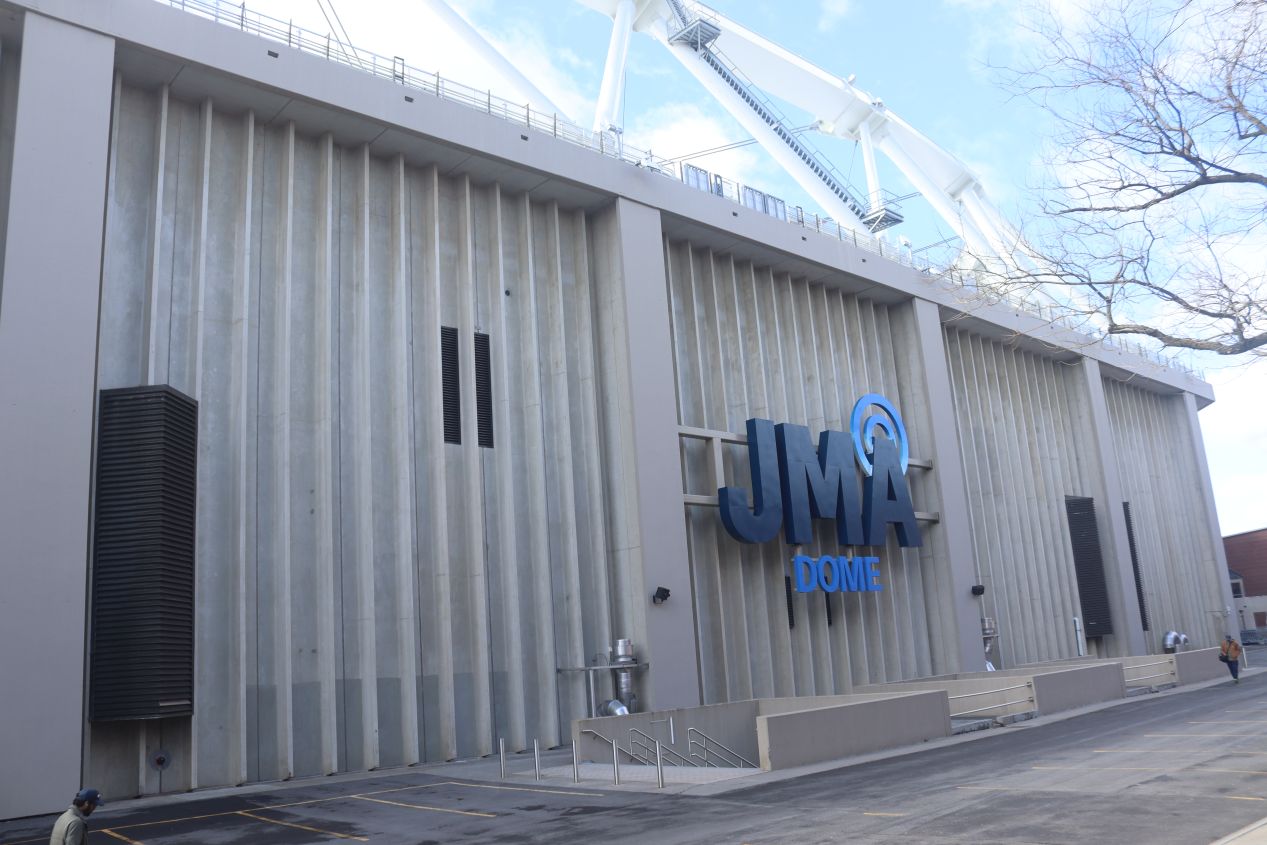


Syracuse University is best known to the general public for its sports teams, especially its basketball teams which have often been successful at going deep into the NCAA Tournament. Syracuse was a founding member of the Big East conference which is where it enjoyed its greatest success; it still feels strange to have the university competing in the ACC, at least when this article was written. The standout building on campus is this massive indoor arena where football and basketball are played. It was known for decades as the Carrier Dome and most people still call it by that name despite the current branding being owned by a company named JMA. On this particular morning, the Carrier Dome was setting up for a monster track rally, of all things, with the central floor covered in dirt and ramps for the giant trucks to drive over. The security staff at the front entrance were nice enough to let me go inside and snap these quick pictures even though I didn't have a ticket for the event.
We had earlier taken our son William over to the athletics complex which is completely separate from the main campus a few miles to the south. This was close to where we were staying and he spent about an hour toddling around exploring various things by the athletics field. I didn't have our main camera with me at the time so I don't have pictures to share of the indoor football practice facility or the statue of Jim Brown, the greatest athlete to play at Syracuse. One small note here: University of Maryland fans are well aware that Syracuse's best sport from a historical perspective has been lacrosse in which the university has won 14 national titles. Maryland spent many long years being tortured by Syracuse in lacrosse even though this is a sport that gets little mainstream attention. (Apparently Syracuse also has 11 national titles in men's and women's rowing - it's very much a preppy school!)

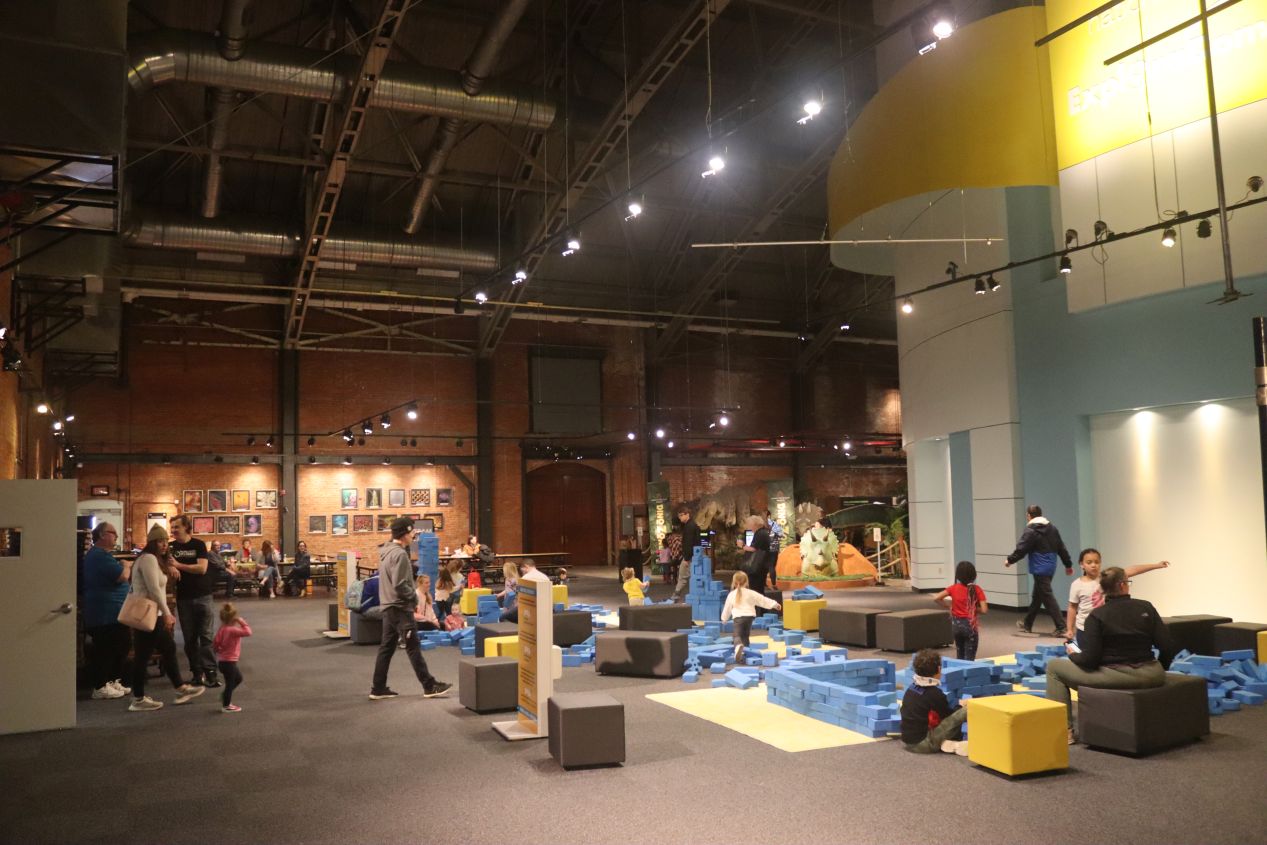


After we finished walking around the Syracuse campus, we drove a few blocks north into the center of the city to visit the Milton J. Rubenstein Museum of Science and Technology, or MOST as it listed on the building's exterior. This building served as the old Syracuse armory and has been converted into a science museum designed to cater to children. This was the perfect place to bring our young son who had lots of fun running around and playing with the bright blue foam bricks. He liked stacking them up as tall as he could get and then knocking them over again. There were plenty of science exhibits to be seen here, of course, with a video wall covering different pollinators and a countdown clock to the impending eclipse.

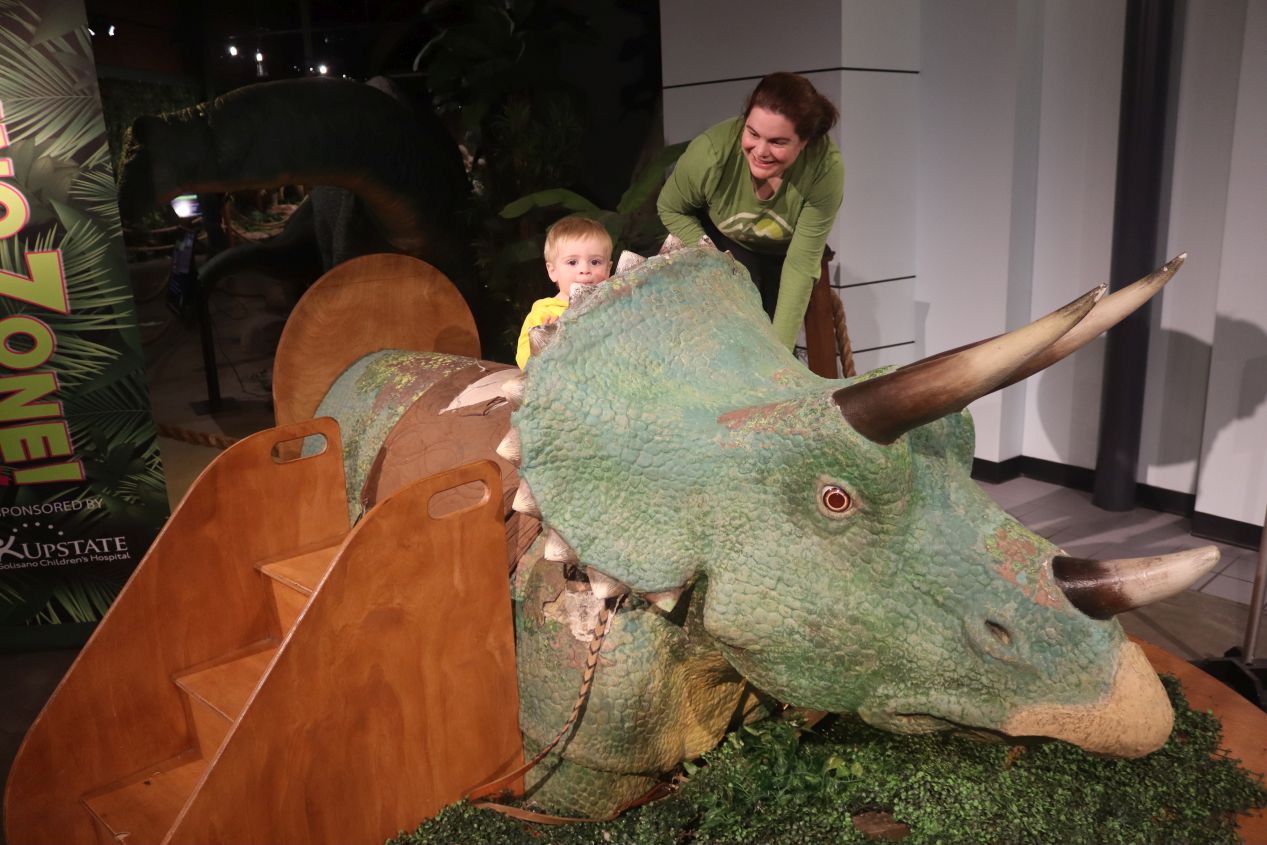


There was also a permanent exhibit here dedicated to dinosaurs which our son found fascinating even if he didn't really understand what was going on. These were animatronic dinosaurs which moved around a bit, their heads swinging to and fro to make them look more lifelike. I think that this would have terrified me when I was 18 months old but our little guy seemed to enjoy everything, petting the head of the Triceratops and staring in awe at the two Pachycephalosauruses that kept headbutting one another. (Pictures like this always make me realize how small he was at the time, only about 2 feet 8 inches and weighing less than 25 pounds.) Then we walked over to a rotating sushi bar named Sakana-Ya for lunch where the food was decent but not spectacular. It was pretty inexpensive as far as sushi goes while also definitely being a case of getting what you paid for.

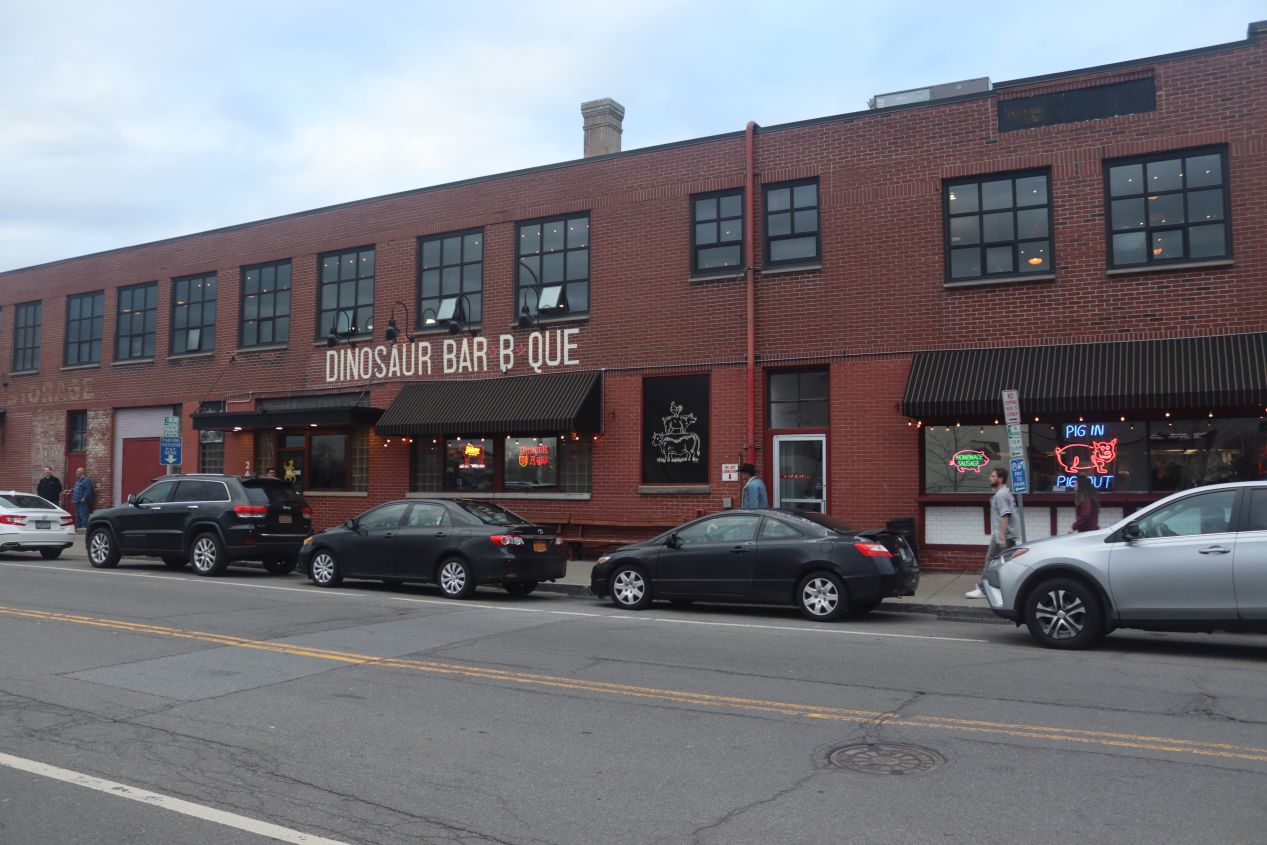


We headed back to the house where we were staying after finishing up with the museum, both to take a break and also so that William could nap for a few hours. We returned back to downtown Syracuse that evening to get dinner at the locally-famous Dinosaur Barbeque restaurant. My wife used to drive up to Syracuse occasionally when she was studying at Cornell University which is about an hour's drive away to the south in Ithaca, New York. She had told me a bunch of stories about visiting Syracuse and eating here at Dinosaur Barbeque, which was kind of a meme due to all of the crazy dinosaur decorations but also legitimately good food. When we went here on Saturday evening, we found that the place was absolutely packed and had a wait of 75-90 minutes which was much longer than we were willing to sit out. We went next door to the nearly-as-crowded Apizza Regionale restaurant, only to return back to Dinosaur Barbeque the next evening on Sunday in the hopes that the lines were shorter. Spoiler: they were not any shorter the next night, as Syracuse was packed with visitors who had come to see the eclipse. We bit the bullet and waited out the 75 minute queue time, with William holding it together beautifully for someone so little. When we actually had the chance to eat dinner, the food was outstanding at Dinosaur Barbeque where I enjoyed a full plate of ribs. It's definitely worth coming here if you can avoid the crazy wait time that we had!

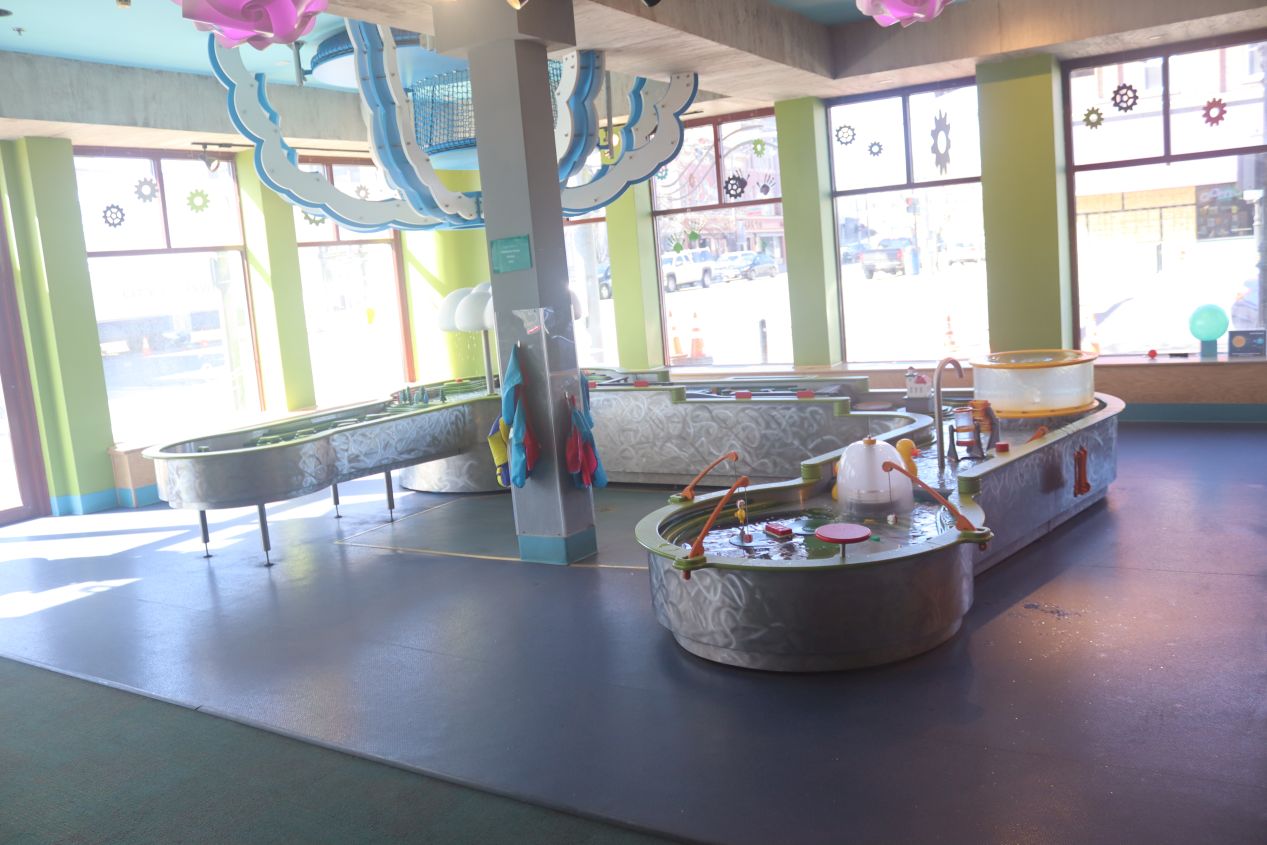


On Sunday, the day before the eclipse, we left Syracuse and drove about 35 miles / 55 kilometers northwest to the town of Oswego. This historic town was located on the shores of Lake Ontario and was much closer to the central line of totality where the eclipse would last for the longest duration. We were heading there one day ahead of time to scout the place out and see what might be the best place to watch the eclipse. Upon arrival, the first place that we stopped was the Children's Museum of Oswego which occupied two floors of a restored building in the small downtown. This children's museum had a water table on the ground floor and then a bunch of different exhibits on the second floor where kids could climb aroud, build things, or pretend to be a firefighter. Our son William greatly enjoyed himself here and we spent close to two hours inside letting him tire himself out. For a small local attraction, this place was a lot of fun.

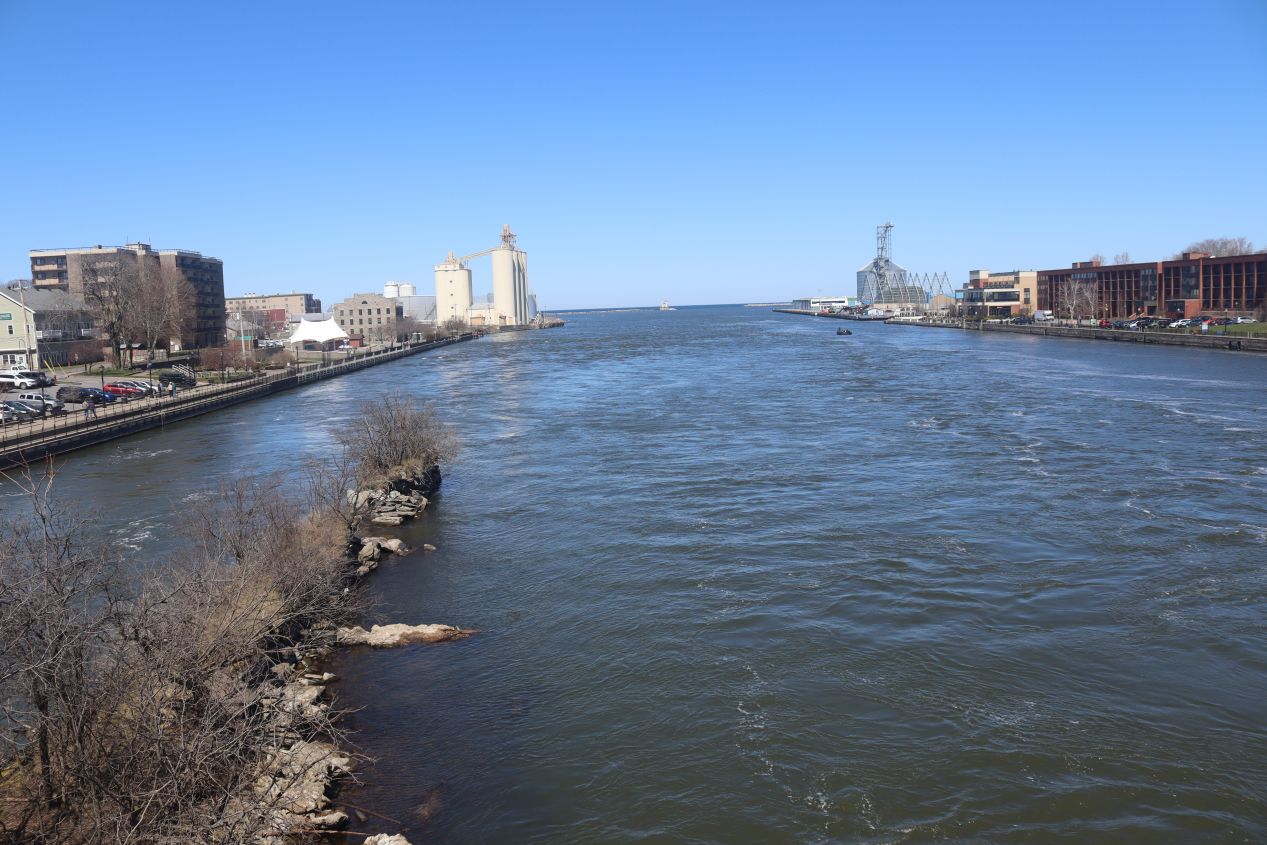


These were a few pictures taken in Oswego looking down at the Oswego River shortly before it emptied into Lake Ontario. This was an important transportation hub in the past, fought over between the British and the French during the Seven Year's War and then again between the British / Canadians and the fledgling American republic during the War of 1812. The United States military built Fort Ontario here on the eastern side of the river and garrisoned it for a good portion of the 19th century; we didn't have time to visit the fort on this trip. Afterwards, Oswego remained a major railroad hub during the first half of the 20th century before shifting technology made most of those rail lines obsolete. The town seemed like a pleasant place to live although its most important days are probably behind it; Oswego's population of roughly 16,000 in 2020 was about the same as its population back in 1860.

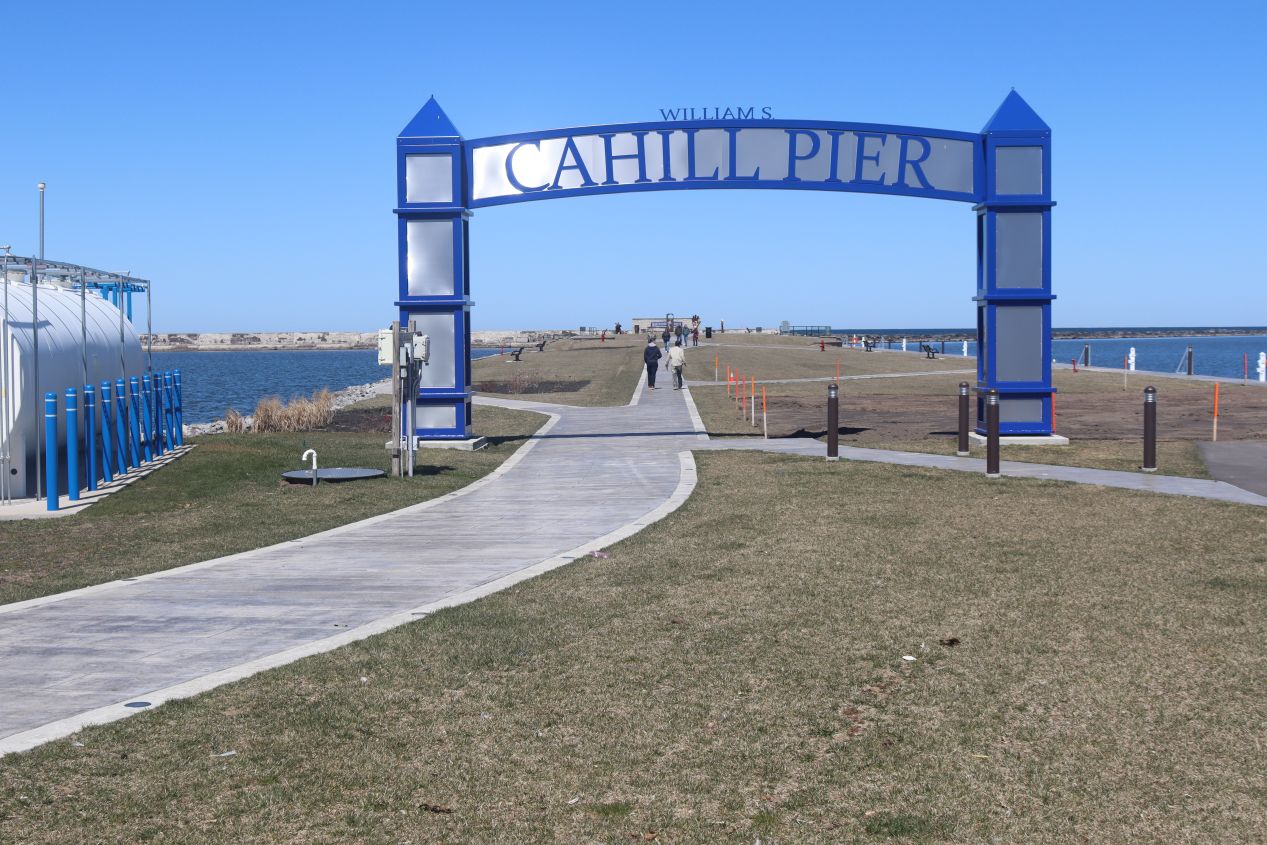


We headed to the lakeshore next where we took a few pictures from atop a hill looking down at the docks below. A small walking trail led out onto something called William Cahill Pier where a handful of other people were outdoors enjoying the weather. It was an absolutely beautiful, if somewhat chilly, day and we were hoping that the same weather would carry over for the eclipse viewing. From Cahill Pier, we could look across the last gasps of the Oswego River to see Fort Ontario atop a hill on the other side, as well as out to the harbor entrance where a lighthouse was perched. This was the West Pierhead Lighthouse and it marked the edge of the breakwater leading into the port of Oswego. The lake surface was calm on this day but all five of the Great Lakes are known for having raging storms when the weather turns bad. For that matter, Oswego also gets crazy amounts of snowfall each year due to lake effect conditions, averaging 140 inches / 350 centimeters of snow annually! I was glad that this eclipse wasn't happening during the winter.

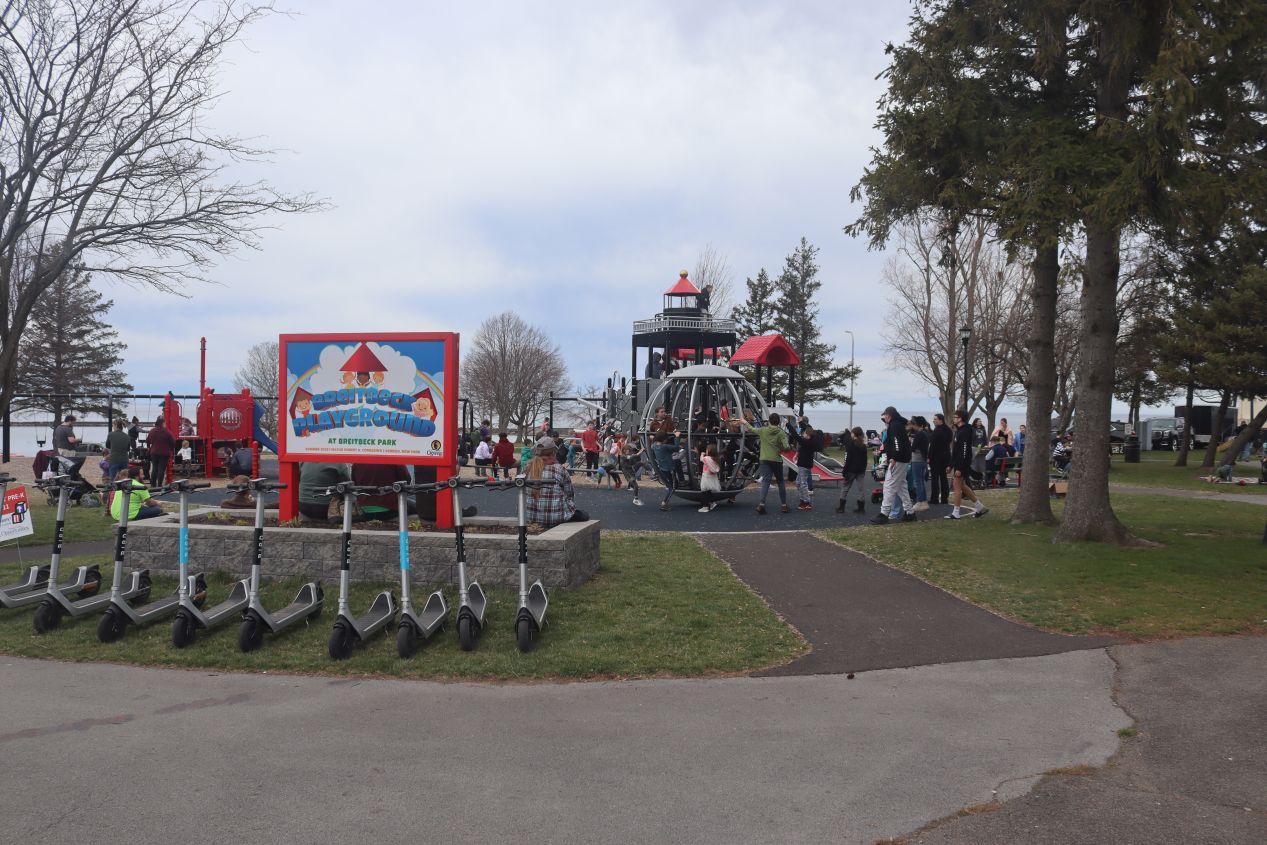


We returned to Oswego in the early afternoon of the next day for the eclipse viewing itself. This time we were setting up in Breitbeck Park which was only a few minute's walk westward along the lake from Cahill Pier. This seemed to be the place where the town was gathering for eclipse festivities with hundreds of people sitting out in the open air of the lakeside park. There was live music playing on a small stage, several different food trucks offering hot meals to the gathered crowd, and tons of kids running around everywhere - apparently the local schools were all closed even though it was a Monday. The skies were partly cloudy for the moment, nowhere near as clear as the day before but hopefully still pretty solid for eclipse viewing.

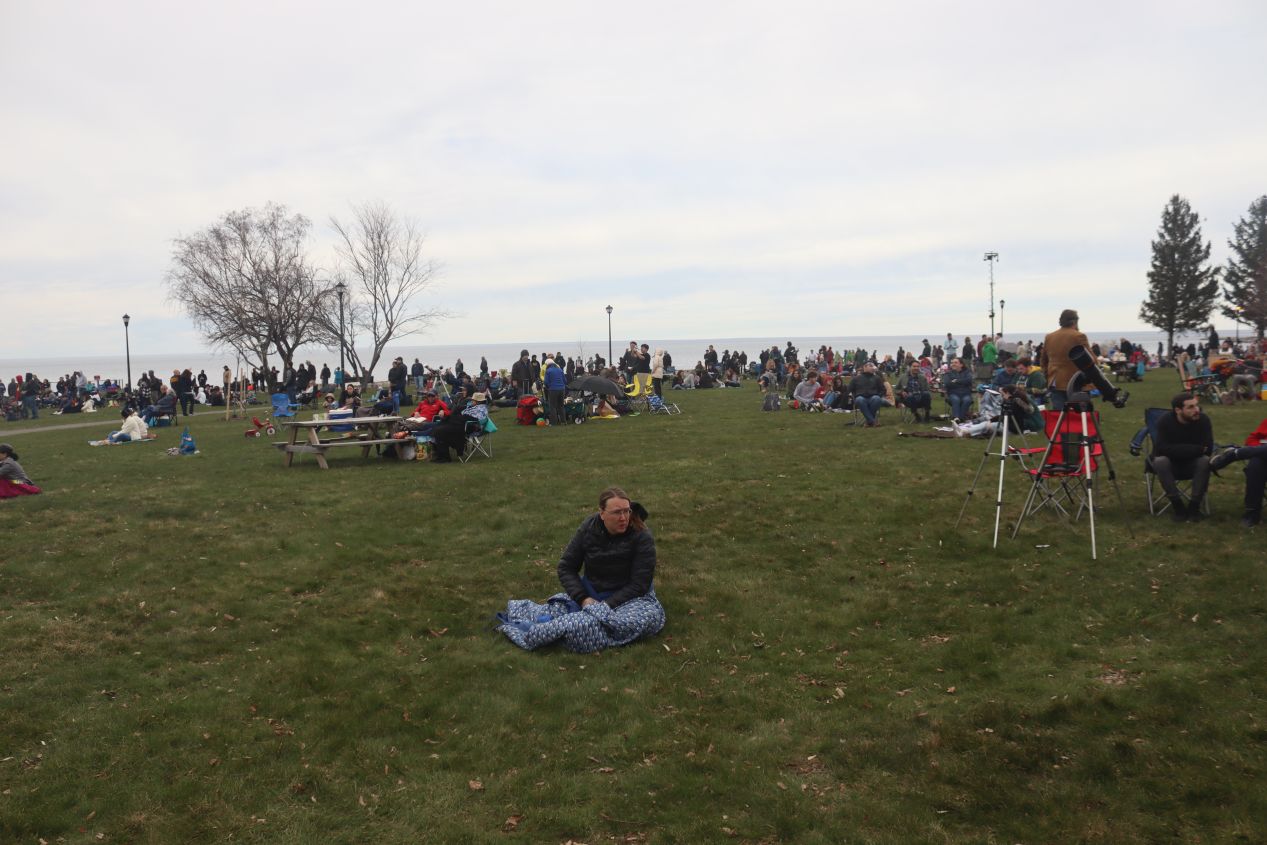


The eclipse was due to start about an hour after we arrived in Oswego and reach totality at 3:20 PM local time. We waited in the long lines to get some food from the trucks (one of them was selling Korean food which turned out to be surprisingly good!) while letting William run around in the grass and enjoy himself. He really liked the science table where some individuals were blowing huge bubbles and letting them drift out over the grass. Over the course of the next 90 minutes, two different things took place. First, it started to get noticeably colder as the eclipse began and the moon started blocking light from the sun. I had remembered that from my previous eclipse experience in 2017, although back then it had been boiling hot in late-summer South Carolina where the cooler temperatures were welcome. This time around, it had been a chilly 50 degrees Fahrenheit / 10 degrees Celsius that dropped down to a downright cold 35 Fahrenheit / 2 Celsius. We had to grab our warmer coats from the car because it was getting so much colder with the wind off the lake.
The other development was more unfortunate: clouds kept rolling in from the west until they had completely blanketed the sky. The sun occasionally peeked through an opening but for the most part we would not have a direct view of the eclipse itself. That was hugely disappointing but there wasn't much that we could do about it. As the moment of totality drew closer, the sky continued to fall darker and darker as if the sun were setting - which in a sense it was. The views out over Lake Ontario also started to get wilder and wilder, with dark gray clouds directly above and an unearthly orange light hovering over the water off on the horizon. I wasn't exactly sure what was going on there but it was fascinating to watch.

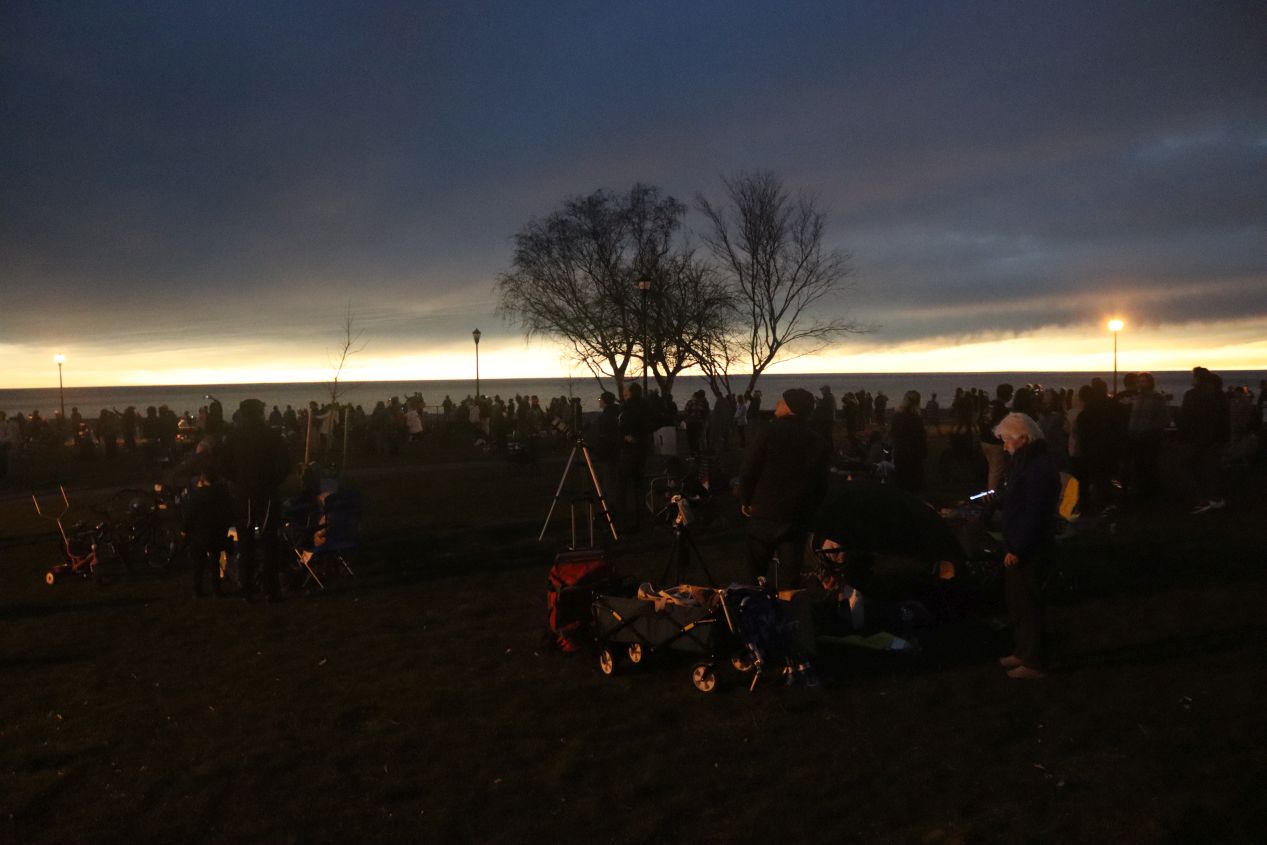

When the eclipse itself hit, the sky went completely black for approximately three minutes with the only light coming from the local streetlamps. The view over the lake continued to have that bizarre orange glow as if there were raging fires somewhere far off in the distance. The crowd went wild when the full eclipse arrived, even though no one could see the sun directly, and there was a real party atmosphere throughout the park. Even though the local weather conditions were a disappointment, this was still a really fun experience that I was so glad to be able to see with my family. We took a quick selfie together during the total eclipse to capture the moment even if William didn't understand what was happening.

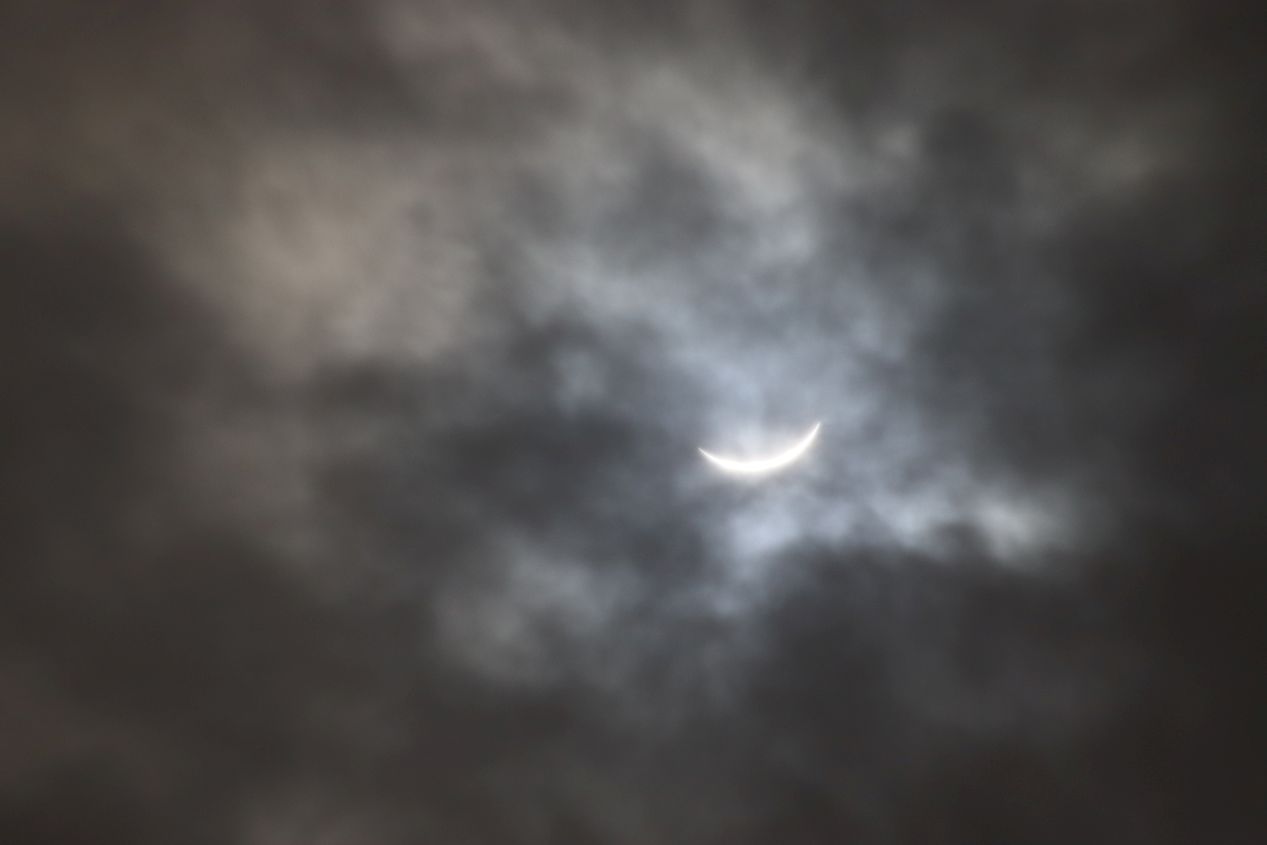


As quickly as it had begun, the eclipse came to a close and sunlight began to return to this late afternoon. But then something unexpected happened: after the eclipse had finished, there was a small break in the clouds just a minute or two later that allowed us to catch a glimpse of the returning sun! I grabbed the camera and started taking pictures with our zoom lens, with the third one above coming out particularly well. The sun was still something like 98% covered by the moon and just a tiny sliver of a cresent was visible. The clouds overhead even gave these images kind of a mystical feel to them, like something out of a dream or a poorly-done Photoshop job. These were real images though and we were lucky to have that tiny little break in the clouds appear to create this opportunity. If only it had happened about three minutes earlier during the period of totality!
We headed back to Syracuse afterwards, with only a little bit of eclipse traffic slowing us down, then stayed overnight and returned back to the Washington DC area the next day. This was a great little trip to take and provided a much-needed break from the normal grind of work. The clouds overhead during the eclipse were the only blemish from this jaunt to upstate New York, everything else was a lot of fun. Our son in particular did amazingly well on the two long car rides and keeping things together while traveling to new places. This wasn't one of my more exotic travel reports but I hope it was still entertaining to reach - thanks as always for stopping by.



